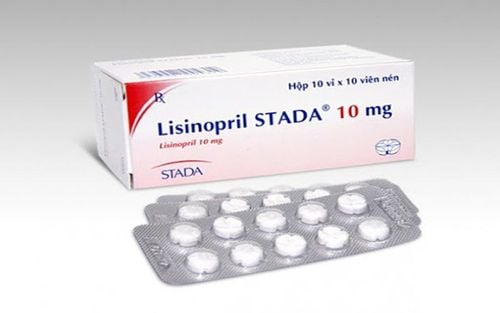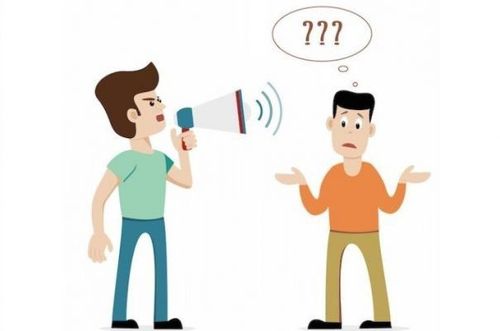This is an automatically translated article.
The article is professionally consulted by Master, Doctor Huynh An Thien - Neurologist - Department of Medical Examination & Internal Medicine - Vinmec Danang International Hospital.Vestibular syndrome with dizziness as the primary symptom is very common. This makes daily activities, work and walking difficult. Although most cases of vestibular syndrome are not life-threatening, the patient's quality of life is always impaired.
1. What is vestibular syndrome?
The vestibular system includes parts of the inner ear, cranial nerve VIII, and the brain that process sensory information involved in controlling balance and eye and body movements. Any disease or injury that damages these components causes vestibular syndrome. In addition, vestibular disorders can also be caused or worsened by genetic or environmental conditions, or sometimes have no known cause.The most common vestibular dysfunction diagnoses include benign paroxysmal positional vertigo, labyrinthitis and vestibular neuritis, Meniere's disease, and secondary chickenpox. . In addition, lesions in the brain, affecting the vestibular nucleus also cause symptoms of imbalance in patients. Accordingly, the approach to diagnosis and treatment should depend on the classification of vestibular syndrome.
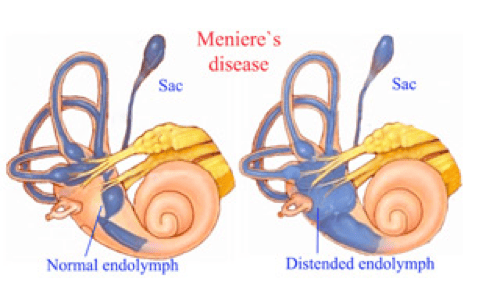
2. How to classify vestibular syndrome?
Vestibular syndromes are classified into two types as peripheral vestibular syndromes or central vestibular syndromes. The basis of this division is depending on the location of dysfunction of the vestibular reflex pathway. However, this also cannot rule out that the cause of vestibular syndrome is psychological factors.2.1 Peripheral vestibular syndrome
Peripheral vestibular syndrome is when the cause is problems with the inner ear, including the semicircular canals, cochlea, and vestibular nerve.The most common diagnosis is benign paroxysmal positional vertigo, which accounts for 32% of all peripheral vestibular syndromes. Other causes include Meniere's disease (12%), superior semicircular canal syndrome, labyrinthitis, and visual vertigo. In addition, any inflammatory agent such as the common cold, flu, and bacterial infections can cause transient vertigo if the inner ear is affected, including the use of certain medications such as aminoglycosides. or physical trauma such as a skull fracture. If vertigo is caused by movement, it is also classified as peripheral vestibular syndrome.
People with peripheral vertigo typically present with mild to moderate imbalance, nausea, vomiting, hearing loss, ringing in the ears, bloating, and pain in the ears. In addition, lesions of the internal auditory canal may be associated with unilateral facial paralysis. Because of the compensatory potential, acute peripheral vestibular syndrome due to damage to the peripheral vestibular system tends to improve over a short period of time, from days to weeks).
2.2 Central vestibular syndrome
Central vestibular vertigo is caused by trauma to the balance centers of the central nervous system. This is usually the result of an injury to the brain or cerebellum and is less likely to cause hallucinations of movement or nausea than vertigo of peripheral origin.Central vestibular syndrome may be accompanied by neurological deficits, such as slurred speech and diplopia, and especially pathological nystagmus.
Some central nervous system conditions that can lead to central vestibular syndrome are infarct or hemorrhagic lesions, tumors appearing in the cerebellum, cervical spine disorders such as degenerative cervical spondylosis, lateral spinal column syndrome, Chiari malformation, multiple sclerosis, Parkinson's disease as well as general brain dysfunction.
Compared with peripheral vestibular syndrome, central vestibular syndrome often has little improvement or may improve more slowly due to physical lesions in the brain and is less likely to compensate.
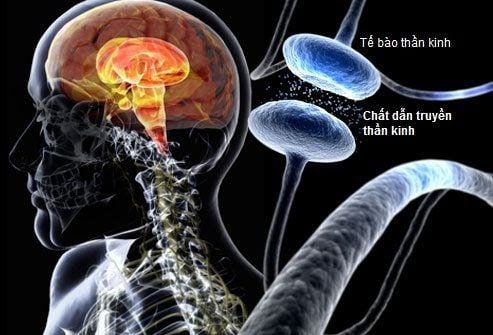
3. Symptoms of vestibular syndrome
The vestibular system includes parts of the inner ear and brain that help control balance and eye movement. If this system is damaged by disease, aging, or trauma, vestibular dysphoria syndrome can occur with the following symptoms:Dizziness, imbalance and spatial disorientation, visual disturbances Nausea or vomiting Feeling of "hangover" or "seasickness" in the head Headache Stuttering Hearing changes Cognitive changes Psychological changes Other symptoms such as difficulty concentrating and paying attention, being easily distracted , easy to forget or short-term memory loss...

4. How is vestibular syndrome diagnosed?
The vestibular organs begin in the inner ear and cranial nerve VIII enters the gray nucleus in the center of the brain, forming a complex system. Therefore, a thorough evaluation from the inner ear area is not to be missed.Physicians use information from the patient's medical history and current examinations and indications for diagnostic testing to assess vestibular system function. At the same time, it is also necessary to rule out other causes that can also cause similar symptoms.
Tests to diagnose vestibular syndrome are built on the basis of vestibular function tests, such as the instinctive movement of the eyeball in the presence of cochlear stimuli. In addition, monitoring the patient's tendency to turn head, gait, posture, posture as well as the body's ability to balance in space can also indicate that the dizziness is caused by prefrontal syndrome. family or abnormalities in other organs.
At the same time, audiometry is also a component of vestibular examination because the eighth cranial nerve is responsible for both auditory and vestibular functions. However, when these two functions enter the brain center, they end up in different gray nuclei. Accordingly, any cause of vestibular syndrome at the same time as hearing loss is inferred to be at the peripheral vestibular location. That's when a person has vestibular disorders and evidence of hearing loss, tinnitus, or hearing noises in the ears.
Besides the usual examination, cranial imaging also plays a role in the diagnosis of vestibular syndrome, especially in detecting the causes of central vestibular syndrome. The commonly indicated means are magnetic resonance imaging (MRI), computed tomography (CT).
In addition, other routine tests are needed to evaluate the function of other organ systems or to discover other causes of balance disorders: complete blood count, blood chemistry, laboratory tests. allergies, vision test...
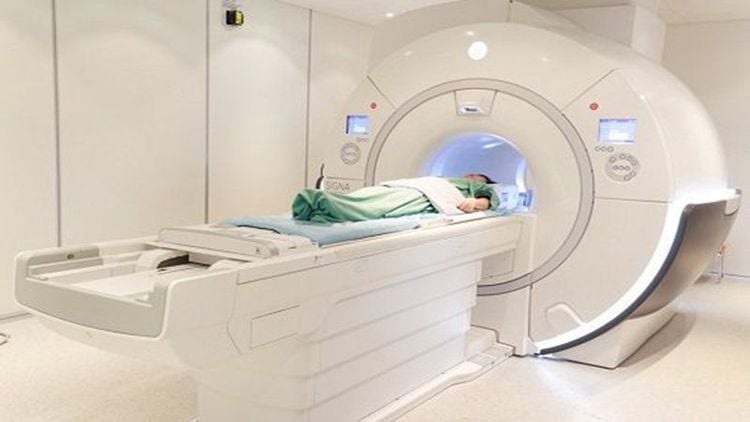
5. How is vestibular syndrome treated?
Treatment for vertigo, an imbalance caused by vestibular dysfunction, depends on your symptoms, medical history, and general health. Furthermore, avoid overlooking the possibility that vestibular syndrome may occur as a side effect of treatment for other conditions.Treatment modalities in vestibular syndrome include:
Postural correction: Using head, body, and eye exercises to tune the brain in recognizing and processing signals from the vestibular system and combine them with visual and depth-sensing information.
Cochlear repositioning: This is a specialized form for the treatment of benign paroxysmal positional vertigo. This treatment, commonly known as the Epley maneuver, involves a series of continuous head and body movements to move cochlear stones inward.
Lifestyle changes: Many people with Meniere's disease, migraine-related dizziness find that certain modifications to the diet are very helpful in controlling dizziness.

Use of drugs: The use of drugs in the treatment of vestibular disorders depends on whether vestibular system dysfunction is early or acute (lasting up to 5 days) or chronic (lasting more than 5 days). ) with drugs to treat dizziness, reduce vestibular stimulation or sedatives, antiemetics. For diseases caused by central vestibular syndrome, the prescription of drugs should be suitable for lesions in the brain such as stroke, encephalitis or degeneration.
Surgery: When medical treatment modalities such as the above do not work, surgery may be considered in the management of vestibular syndrome, performed depending on the diagnosis and physical condition of the individual. personal. For peripheral vestibular syndrome, surgery is aimed at correcting or destroying to stabilize the function of the inner ear or to block the transmission of sensory information from the inner ear to the brain. In contrast, in central vestibular syndrome, surgical intervention may be limited due to physical damage in the brain parenchyma.
In short, vestibular syndrome, although not harmful, causes a very uncomfortable feeling of dizziness, affecting daily activities. Therefore, understanding what vestibular syndrome is, classification of vestibular syndrome and treatment is necessary for each family.
Please dial HOTLINE for more information or register for an appointment HERE. Download MyVinmec app to make appointments faster and to manage your bookings easily.






